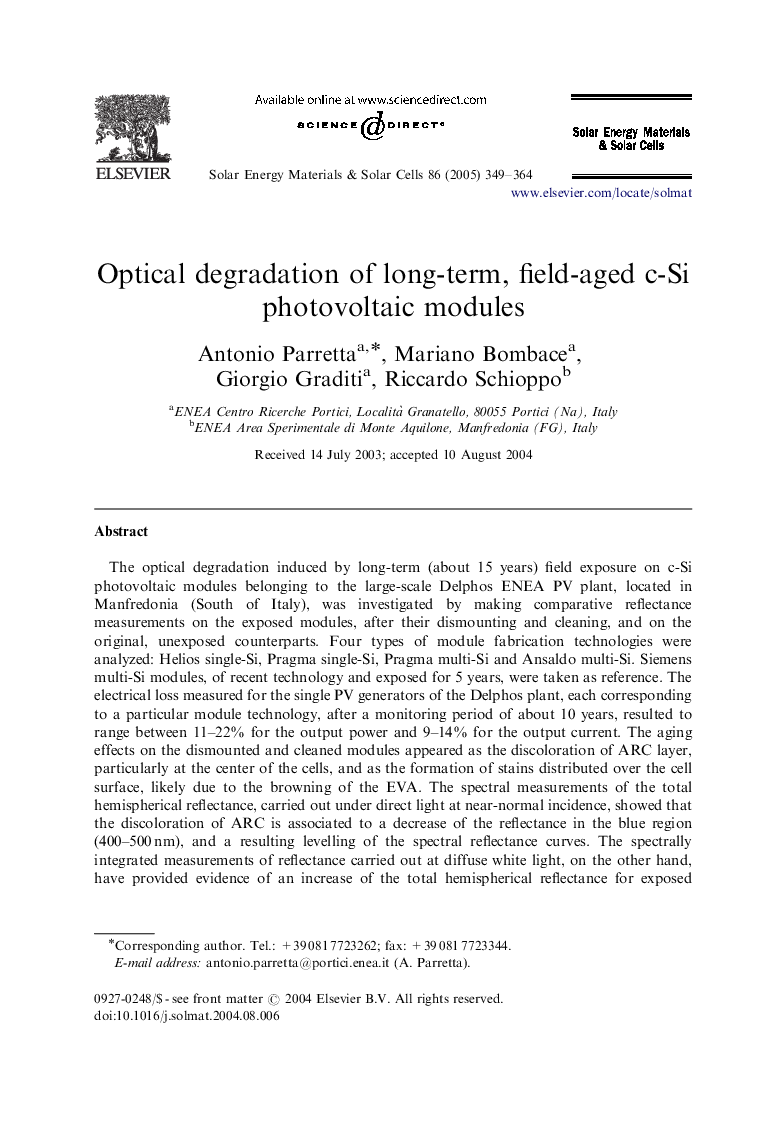| Article ID | Journal | Published Year | Pages | File Type |
|---|---|---|---|---|
| 10249210 | Solar Energy Materials and Solar Cells | 2005 | 16 Pages |
Abstract
The optical degradation induced by long-term (about 15 years) field exposure on c-Si photovoltaic modules belonging to the large-scale Delphos ENEA PV plant, located in Manfredonia (South of Italy), was investigated by making comparative reflectance measurements on the exposed modules, after their dismounting and cleaning, and on the original, unexposed counterparts. Four types of module fabrication technologies were analyzed: Helios single-Si, Pragma single-Si, Pragma multi-Si and Ansaldo multi-Si. Siemens multi-Si modules, of recent technology and exposed for 5 years, were taken as reference. The electrical loss measured for the single PV generators of the Delphos plant, each corresponding to a particular module technology, after a monitoring period of about 10 years, resulted to range between 11-22% for the output power and 9-14% for the output current. The aging effects on the dismounted and cleaned modules appeared as the discoloration of ARC layer, particularly at the center of the cells, and as the formation of stains distributed over the cell surface, likely due to the browning of the EVA. The spectral measurements of the total hemispherical reflectance, carried out under direct light at near-normal incidence, showed that the discoloration of ARC is associated to a decrease of the reflectance in the blue region (400-500Â nm), and a resulting levelling of the spectral reflectance curves. The spectrally integrated measurements of reflectance carried out at diffuse white light, on the other hand, have provided evidence of an increase of the total hemispherical reflectance for exposed modules, particularly marked for the multi-Si modules, which correlates quite well with the extent of current loss measured on the single PV generators of Delphos plant.
Keywords
Related Topics
Physical Sciences and Engineering
Chemical Engineering
Catalysis
Authors
Antonio Parretta, Mariano Bombace, Giorgio Graditi, Riccardo Schioppo,
